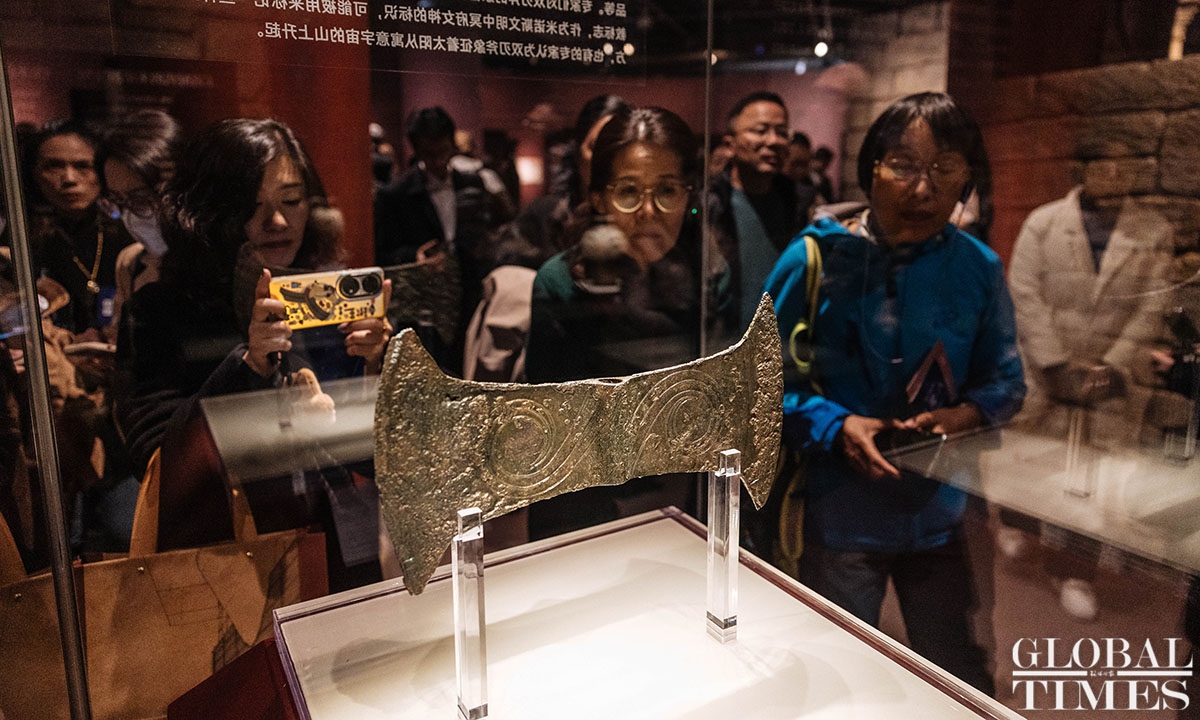
Photo: Li Hao/GT
Featuring 270 artifacts from 14 Greek museums, the exhibition
The Greeks: Agamemnon to Alexander the Great opened at the Capital Museum in Beijing on Wednesday.
The items on display are distinct as they reflect how various periods of ancient Greek civilization thrived. Spanning from the Neolithic period of Greece to the Hellenistic era of the 1st century BC, they shine light on the ancient civilizations of the Cycladic Islands and Minoan Crete, the Mycenaean kingdoms and the legendary Agamemnon, the golden age of Athens under Pericles, and the Hellenistic era of Alexander the Great.
Shao Xinxin, the exhibition's curator, told the Global Times that the exhibition "not only brings visitors close to the Greek civilization, but also guides them to find similarities between Greek and Chinese civilizations."
Made of bronze, a double axe is on display. The piece was excavated from the Arkalochori Cave in Greece, and dates to 1700 BC to 1600 BC. The double axe carries a similar appearance to yue, a type of ancient Chinese axe that was also primarily made of bronze.
Both the Greek axe and the Chinese yue were not only practical weapons, but also were used in sacrificial ceremonies, Shao told the Global Times. He also added that this similarity reveals artifacts from China and Greece were rich in cultural symbolism.
Discovered in China's Hebei Province, a stone fragment of a pillar from the Sixteen Kingdoms period (304-439) bears certain similarities to ancient Greek columns, especially its recessed sculpting design. Many scholars say that this type of column design emerged during ancient China due to Western aesthetic influences.
The exhibition vividly portrays the image of ancient Greece through items that reveal the society of the day, craftsmanship and also the lives of people.
Honorary Decrees for Leonides of Halikarnassos is a marble stele that is inscribed with two decrees. They reveal how rights were granted to protect Leonides of Halikarnassos and his sons from injustice in Athens.
While the stela provides insight into ancient Greek civic culture, two bronze strigils reveal ancient Greeks' everyday routines. A strigil is a scraping tool used by ancient Greeks to remove dirt and sweat while bathing.
"This extremely important world-class exhibition generously offers visitors the unique opportunity to get a comprehensive overview of a historical period lasting approximately 2,000 years that shaped world history, literature, science, and art. I am confident that this exhibition will offer visitors the opportunity to gain a better understanding of why Greek civilization is not only the cradle of Western civilization, but also a civilization with a centuries-old presence and a strong footprint in Asia as well," Evgenios Kalpyris, ambassador of Greece to China emphasized while attending the event's opening.
The exhibition is scheduled to end in May 2025.




